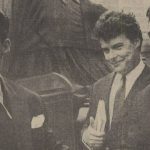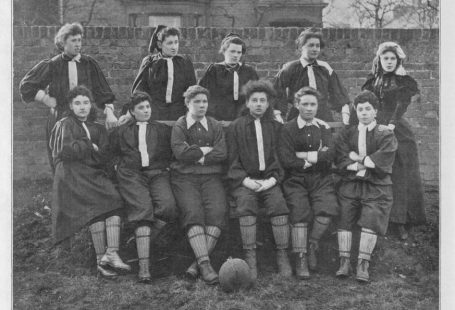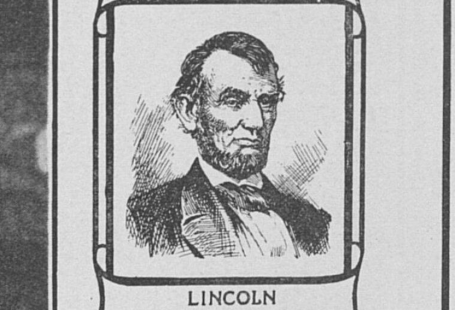Quarterly journal The Keys was first published in July 1933, with Jamaican-born Doctor Harold Moody as its editor. ‘The Official Organ of the League of Coloured Peoples,’ it aimed to address ‘the racial misunderstanding’ that was prevalent in society, both in Britain and beyond.

Arriving onto the turbulent political scene of the 1930s, with issues of race coming more and more to the fore with the rise of Nazi Germany, The Keys set out to impart an understanding between races, whilst also addressing ‘the welfare of coloured peoples in all parts of the world.’
Top tip: Please be aware that The Keys journal uses terms and phrases relating to race that are outmoded, and are unacceptable today. Some of these terms are featured in this blog, as we have at times quoted directly from The Keys.
Want to learn more? Register now and explore The Archive
The Keys is free to view on The Archive and can be accessed here. You will need to register a free account in order to access the title, which you can do here.
The League of Coloured Peoples
But before exploring The Keys further, let’s take a look at the League of Coloured Peoples, the organisation which gave rise to the pioneering publication.
The League of Coloured Peoples (LCP) first came into being in the spring of 1931, after African-American Harvard history professor Doctor Charles Wesley arrived in Britain, and in conjunction with Doctor Harold Moody, gave a series of YMCA-sponsored talks on the theme of race.

Harold Moody was born in Jamaica on 8 October 1882, and in 1904 he sailed to England to study medicine. After qualifying in 1910, he soon found that because of his race he was denied jobs that he was perfectly qualified to undertake. His first role was that of Medical Superintendent at the Marylebone Medical Mission, and he eventually set up his own practice in Peckham, South London.

Since his arrival in Britain, Moody was continually frustrated by the prejudice faced by the Black British population, especially in regards to the sphere of employment. The visit of Charles Wesley in 1931 was the catalyst that Moody needed to tackle such issues on a more formal and organised footing. And so, on 13 March 1931 at the Tottenham Court Road YMCA, the League of Coloured Peoples was formed with Moody as its president. The LCP soon became Britain’s most high profile Black civil rights organisation.
Below, as laid out in The Keys, were the aims of the organisation:
To promote and protect the Social, Educational, Economic and Political Interests of its members.
To interest members in the Welfare of Coloured Peoples in all parts of the World.
To improve relations between the Races.
To co-operate and affiliate with organisations sympathetic to the Coloured People.
Top tip: you can read author and historian S.I. Martin’s essay on The Keys here.
The Keys is Born
Two years after the founding of the LCP, the first edition of The Keys was printed, costing sixpence a copy. In his inaugural editorial, Harold Moody laid out the need for a journal that represented the interests of the LCP:
It has not taken the League long to discover that an organ which could be read, and sent to our many friends and well-wishers was urgently needed.
But what was behind the choice of the name, The Keys? The name came about from a parable that was popularised by James Emman Kwegyir Aggrey in the 1920s. Aggrey was a Ghanaian educator who lived in America. Through his integrationist philosophy, he viewed race relations in terms of piano keys – that both black and white keys ‘must be utilized complementarily in order to achieve harmony.’

This was a philosophy that was further expounded by West African barrister Stephen Peter Thomas in the first edition of The Keys. He wrote how:
Black and White are asked to co-operate in these developments like the Black and White keys of the piano; this can only result when it is realised that white prestige must be necessarily transient, that the keys of the piano are inert and cannot influence either the artist who builds pianos or the artist who plays thereon. Mutuality of consideration is an important factor and developments which will produce this are first indicated for an honourable co-operation.
Co-operation and mutuality were at the heart of the message promoted by The Keys. Progress could not be made in race relations without all races working together, and to this end, Moody wrote in his initial editorial how:
We believe that all races, creeds and colours have their part to play in evolving a new social order and system. All around one sees the need for great co-operation and understanding to attempt some solution to the problem confronting us.
‘Our Brothers and Sisters’
Part of the mission of The Keys journal was to promote the interests of the Black British population, as well as the Black population of what was then the British Empire, as Moody writes:
Our task lies primarily in stating the cause of our brothers and sisters within the British Empire.
Therefore, The Keys addressed issues of discrimination and racist practices that were prevalent in Britain at the time. For example, the first edition of the journal contains reports of how ‘a freezing out in Athletics was going on against the Coloured students’ at Sheffield University, whilst the British Army Officer Training Corps was ‘attacked on all sides’ for barring non-white applicants.

The Keys, therefore, provides an important record of what life was like for Britain’s Black population at the time, and the prejudices to which they were subjected:
On our very doorsteps in Cardiff, London, Liverpool and elsewhere, our brothers and sisters are daily meeting with racial discrimination in their search for work. Medical students, candidates for the nursing profession, and students in various lines of learning have felt the spike heel of racial prejudice, and have often found the door of knowledge barred to them on the ground of colour. Hotels, restaurants, and lodging houses refuse us with impunity.
An ‘Open Sesame’
It was not just the issues of discrimination faced by the Black British community that The Keys sought to address. Moody, writing in his editorial, highlights:
…the legal disabilities under which the African labours in South Africa. The tragic plight of the aboriginal in Australia is a closed book to many at the present. The recent persecution of the Jews in Germany, and the apathy with which the news was received by the world was appalling.
The Keys, therefore, was catholic in its outlook, in its mission to both address and combat different global prejudices. This was reflected by its audience. The Keys had a diverse readership, with readers from the Caribbean, Africa, and the United States, as well as White readers from Britain and beyond.

And the journal, and more particularly, its editor, Harold Moody, was aware of the ‘struggle’ it faced. Moody gave this overview of the work that needed to be done in order to achieve progress in the LCP’s mission:
The League of Coloured Peoples has as its object the purpose of stating the cause of the Black Man. President Roosevelt in his election campaign recently referred to the farmer as the forgotten man in the United States of America. Those remarks can very appropriately be applied to the Black Races of the World. So far we have been content to see the world stage dominated by actors of other races, and a pretty sorry mess they have made of it. To date we have not played any prominent part in government, but have played the part of the audience, and with seats in the gods at that!
But Moody, with The Keys and the LCP, was ‘knocking at the door and [would] not be denied.’ He wrote in July 1933:
‘The Keys,’ will, we trust, be an open sesame to better racial understanding and goodwill. The name is symbolic of what the League is striving for – the opening of doors and avenues now closed to Coloured peoples, and, inspired by Aggrey, the harmonious co-operation of the races.
Turning the Key
So what did the pages of The Keys contain? You can expect to find a range of articles detailing outings organised by the LCP, as well as the achievements of the West Indies cricket team, alongside scholarly essays addressing African-American affairs and ‘anti-colonial struggles across Africa and the African diaspora.’

The Keys also contained photographs of its members, as well as poetry by the likes of Una M. Marson. One of her poems was featured in The Keys’ first edition, and here is an extract from it:
You of white skinned Race
You who profess such innocence,
I’ll tell you why ‘tis sin to tell
Your offspring Coloured folk are queer,
Black men are bogies and inferior far
To any creature born with skin made white.

Meanwhile, within the pages of The Keys you can find a round-up of news relating to Black musicians, sportsmen, artists, and the like, and reports on other organisations like the West African Students’ Union, which was based in London and had opened a hostel in Camden Town in 1933.
The journal also contained ‘Forthcoming Events’ for the LCP, which included plays and lectures put on by the organisation, as well as tennis and garden parties hosted by Harold Moody, and dances held for the West Indies cricket team.

The Keys lasted in its quarterly format until 1939, when a monthly News Letter was then published. The LCP was also represented by letters in the national press, as well as the publication of pamphlets. The pioneering Doctor Harold Moody died in 1947, and the LCP was eventually dissolved four years later, in 1951.
However, The Keys did face some criticism during its publication, which was levied by ‘more revolutionary elements in Black British society.’ Guyana-born Pan-Africanist T. Ras Makonnen declared that the LCP and its journal were in the ‘charitable tradition’ of Victorian emancipation societies. Makonnen was critical, furthermore, of the ‘respectability politics’ which he believed the LCP put forward, its efforts branded as a ‘balm of aid and garden parties.’
But despite such criticism, The Keys was a pioneering periodical, which faced prejudice head on. It provides an important record detailing what life was like for Black men and women in Britain during the 1930s, before the Windrush generation arrived and sadly faced the same type of prejudices outlined by The Keys.

Discover more about Black British history by reading our special blogs here, or dive into your own research by searching the pages of our newspapers here.






